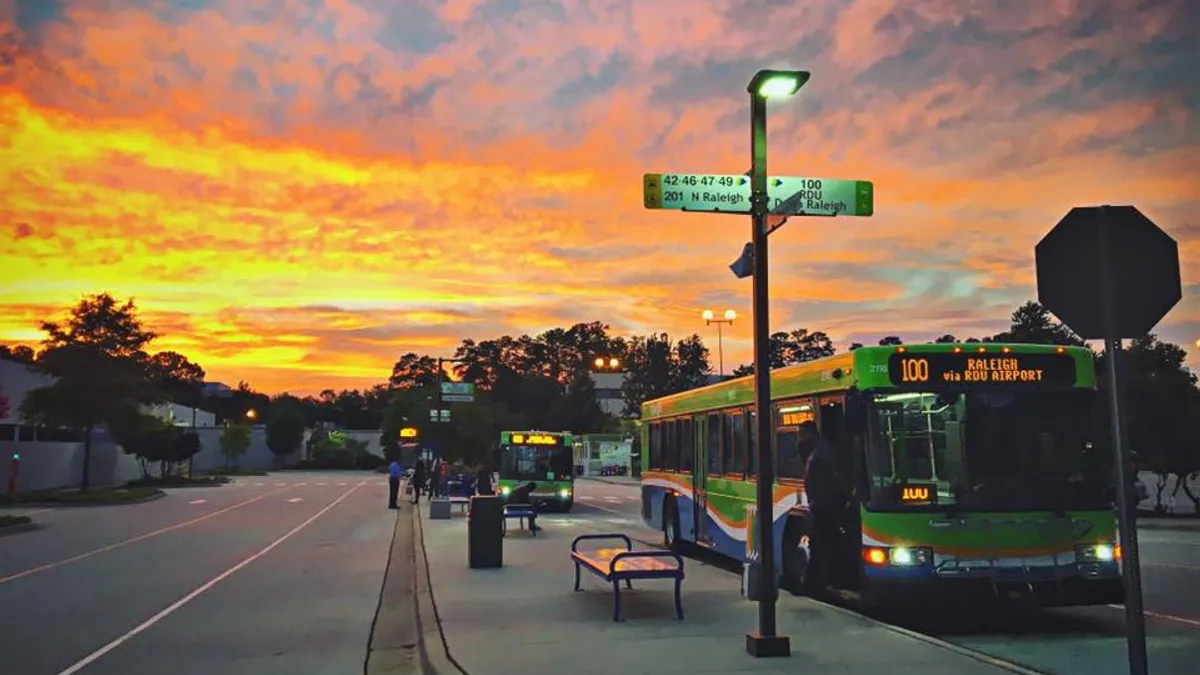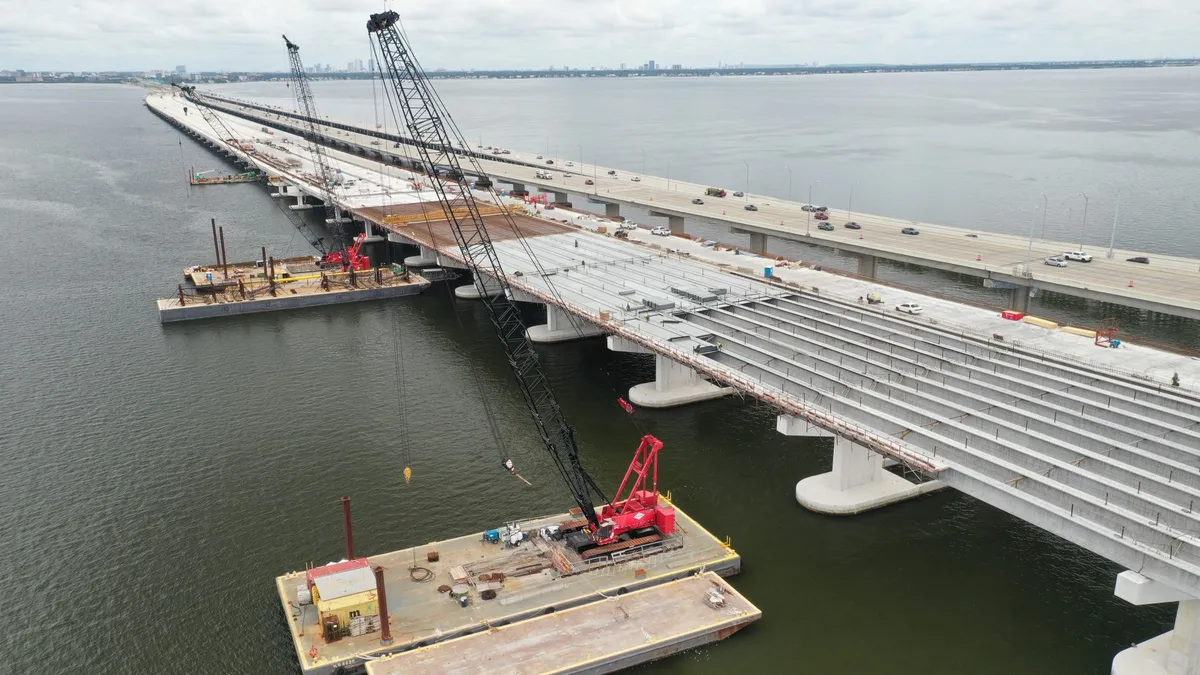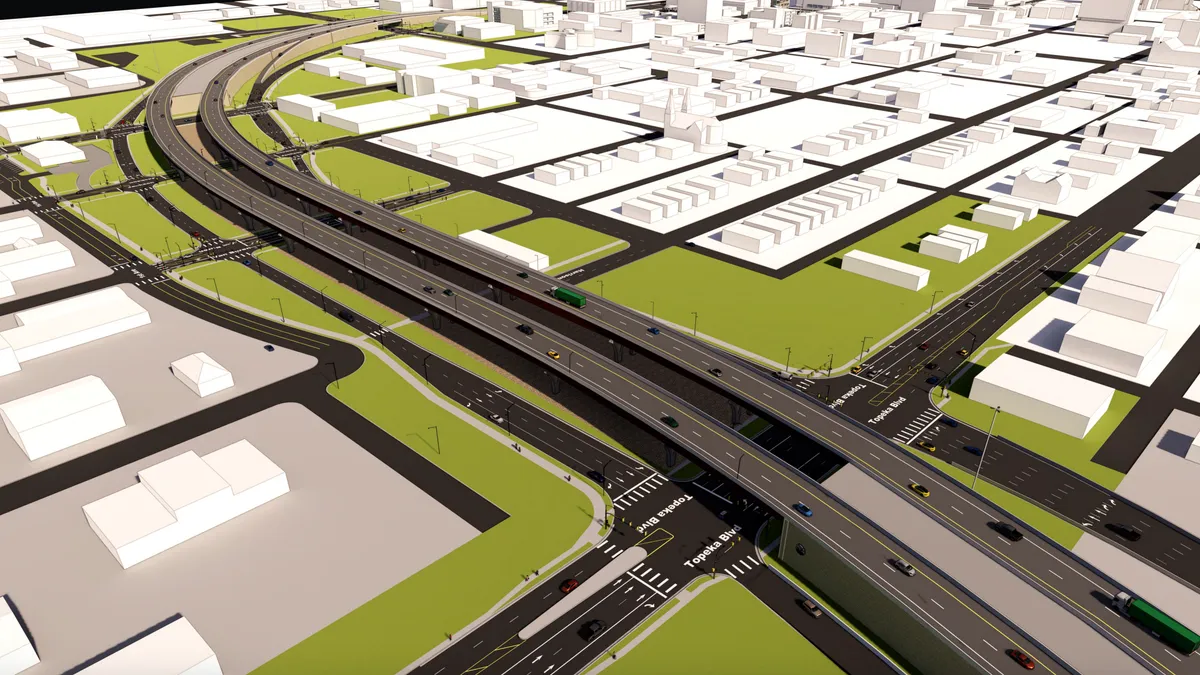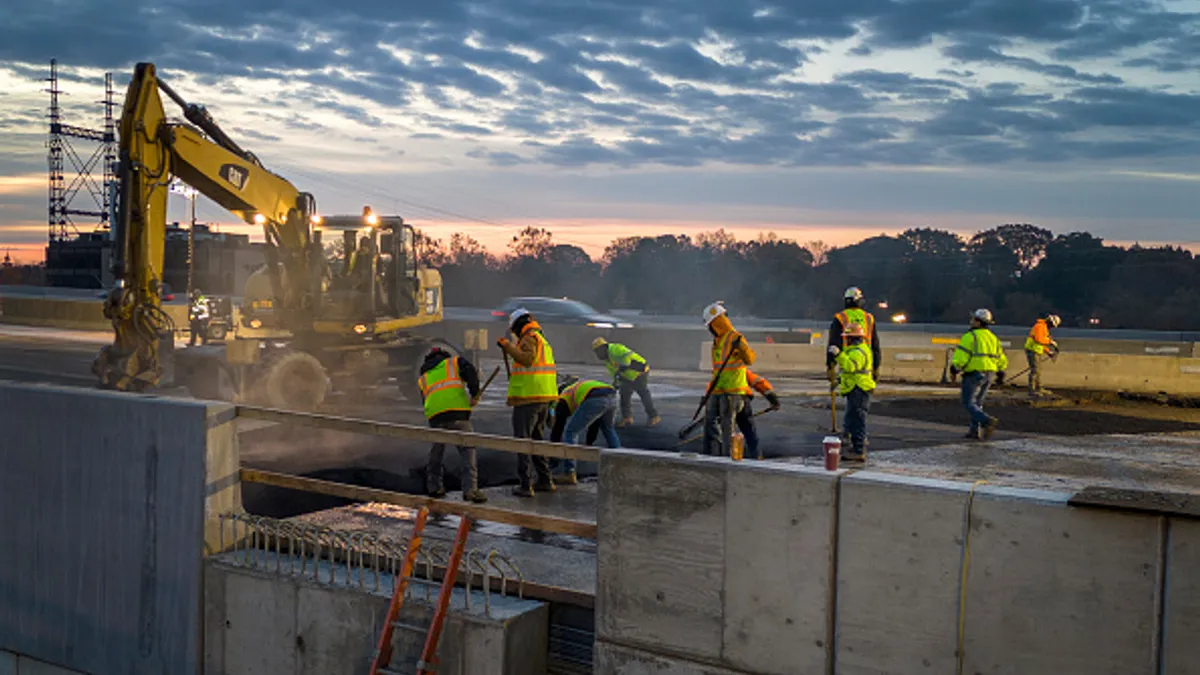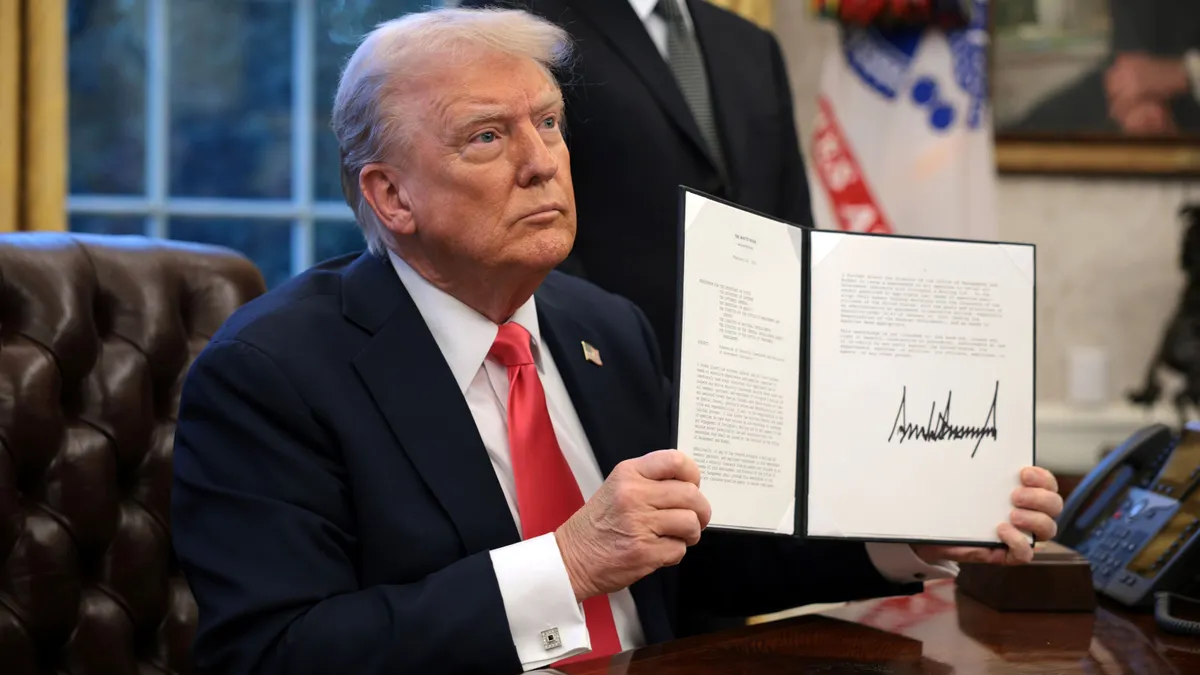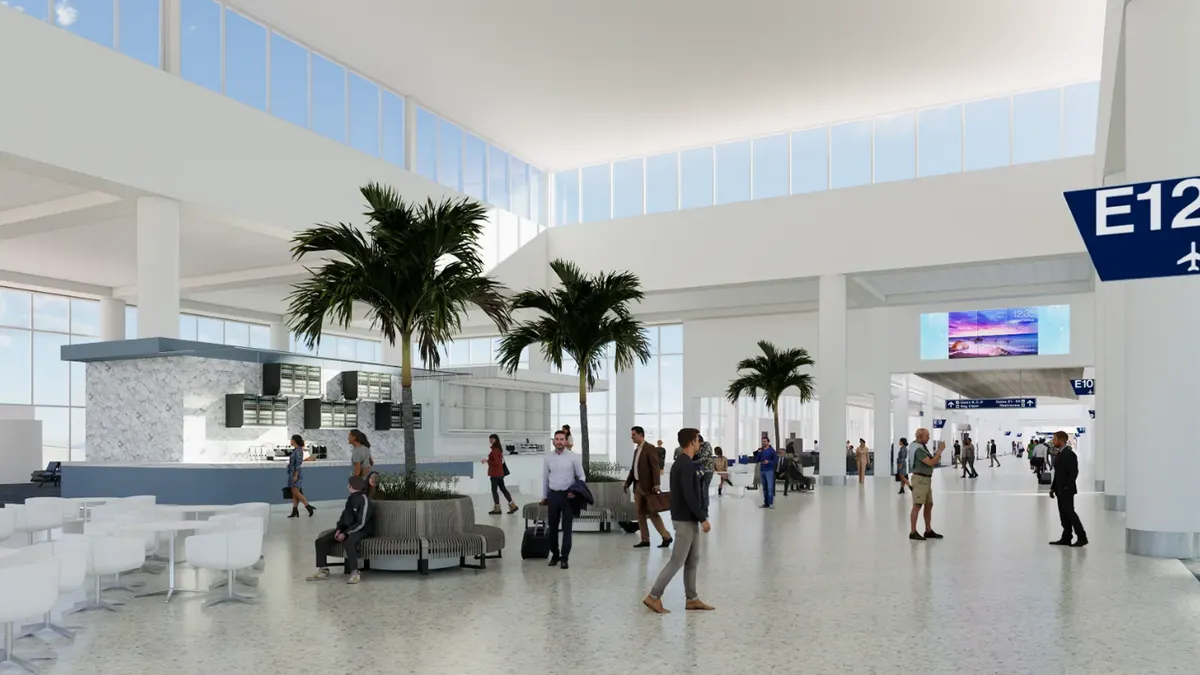In the early 19th century, when the first passenger and cargo trains began making their way across the United States, the establishment of a local station meant that one's town had arrived. The rail symbolized progress and new technology that promoted economic growth and an interconnectedness that the country had never seen before.
Today, trains still represent a sign of progress, but the search for interconnectedness has turned inward. Increasingly, more cities are looking for ways to ease traffic congestion and streamline travel, as well as to discover increased economic opportunities within their own boundaries.
Across the country, a number of these systems are taking shape as states explore the possibilities bullet trains and high-speed rail systems can bring to their region. Construction Dive looked back at where some of the nation's most prominent rail projects have been this year and the latest on their progress.
California
By any measure, the California High Speed Rail Authority's (CHRSA) $64 billion bullet train has had its fair share of challenges. The system, which will eventually connect Los Angeles to San Francisco, has been plagued by allegations of cost overruns and is eight years behind schedule in delivering the first operable segment. Adding to its troubles, the U.S. 9th Circuit Court of Appeals decided in July that the rail system must comply with California Environmental Quality Act rules, which are often used by environmental activists to delay projects.
In October, some said the CHRSA was dragging its feet when it postponed awarding a critical $30 million operations and management contract for the first leg of the line. But, earlier this month, rail officials gave the official nod to DB Engineering & Consulting USA, a subsidiary of German rail company Deutsche Bahn. The bullet train must still go through the environmental review process, the deadline for which has been pushed back from this year to 2020.
Texas
The Lone Star State is also working toward its own bullet train. Texas' version proposes a direct shot from Houston to Dallas, transporting passengers between the two in 90 minutes. The $12 billion Texas Central Railway hit a public-relations bump this year when residents along its projected path made complaints about alleged heavy-handed tactics in the land acquisition process. Some Texas legislators hopped on board, introducing 20 bills that offered up various ways to stop or slow down the project's development.
Lawmakers ultimately passed only two bills, a safety measure and another that prohibits the state from funding the project. Texas Central Partners (TCP), however, has maintained that it is using private money to pay for the rail's construction. In August, TCP hired Fluor Enterprises and Lane Construction Corp. to perform pre-construction planning, scheduling, cost estimating, procurement and design and engineering services. The project is still waiting on the Federal Railroad Administration's draft environmental review, which will identify what the agency deems the best route.
Massachusetts
Like California's bullet train, Boston's Green Line light-rail extension has had its own scheduling and budget issues. The Green Line's obstacles, however, were severe enough to run up $1 billion in cost overruns, eventually leading the Massachusetts Bay Transportation Authority (MBTA) to fire all the lead contractors in December 2015. The MBTA then went back to the drawing board, whittling $700 million from the $3 billion project.
The cost-cutting was, in part, an effort to keep the Federal Transportation Administration (FTA) comfortable with its commitment of $1 billion in grant money for the light-rail system. In order to ensure that grant's safety, the MBTA also hired John Dalton, a seasoned manager with rail experience to oversee the project.
On Nov. 20, the MBTA hired a new contractor for the now $2.2 billion project, GLX Constructors. The contractor is a consortium that includes Fluor Enterprises, The Middlesex Corporation, Herzog Contracting Corp. and Balfour Beatty Infrastructure. In its $1.08 billion bid, the group said it could add back certain features the MBTA had to lose in the line's redesign.
Maryland
The $5.6 billion Purple Line continues to field its share of challenges after being stalled in court for almost a year. In October 2016, activists filed a lawsuit questioning a number of issues concerning the project, including the accuracy of its projected ridership in the original environmental review. Then, in June, U.S. District Judge Richard Leon revoked the project's federal approval days before the Purple Line was to receive a $900 million grant from the FTA.
After legal wrangling between Leon's court, project stakeholders and the U.S. Court of Appeals for the D.C. Circuit, a federal appeals court judge reinstated the project's federal approval and ruled that construction could begin — a decision that made it possible for the rail line to re-apply for an FTA grant. The U.S. Court of Appeals D.C. Circuit heard arguments on the environmental review and ridership issue on Nov. 1 to determine a legal path to continue with the line's construction.
New York-New Jersey
Amtrak is laying the tracks for its huge rail initiative along the Northeast Corridor, the $24 billion Gateway Program. The first phase of these projects will be the Hudson River Tunnel project and the replacement of the North and South Portal Bridge spans.
New Jersey Gov. Chris Christie presided over the groundbreaking for the $1.5 billion Portal North bridge segment in October. The 110-year-old swing bridge, which sees more than 58 million passengers a year, often breaks down causing congestion along that train route. Thus far, about $20 million in bridge contracts have been awarded for preliminary work.
The $12.9 billion Hudson River dual-tunnel replacement is another critical part of the Gateway initiative. The project, which could cost the Port Authority of New York and New Jersey $3.5 billion, suffered brutal saltwater-intrusion damage to its existing tunnels and equipment from Superstorm Sandy in 2012. Project financing is not yet in place, but Amtrak said they have tentative plans to kick off construction in March 2018.
The Gateway Program Development Corporation (GPDC), which is tasked with overseeing the Gateway program, has said it will consider private financing options in case President Donald Trump does not honor the Obama-era agreement that the federal government would pick up half the tab. In August, the agency hired Francis Sacr, previously with French bank Societe Generale's Americas infrastructure financing division to serve as an interim chief financial officer. Sacr has expertise in private-sector financing and was an adviser for the $4 billion LaGuardia Airport Terminal replacement project — another public-private partnership.


